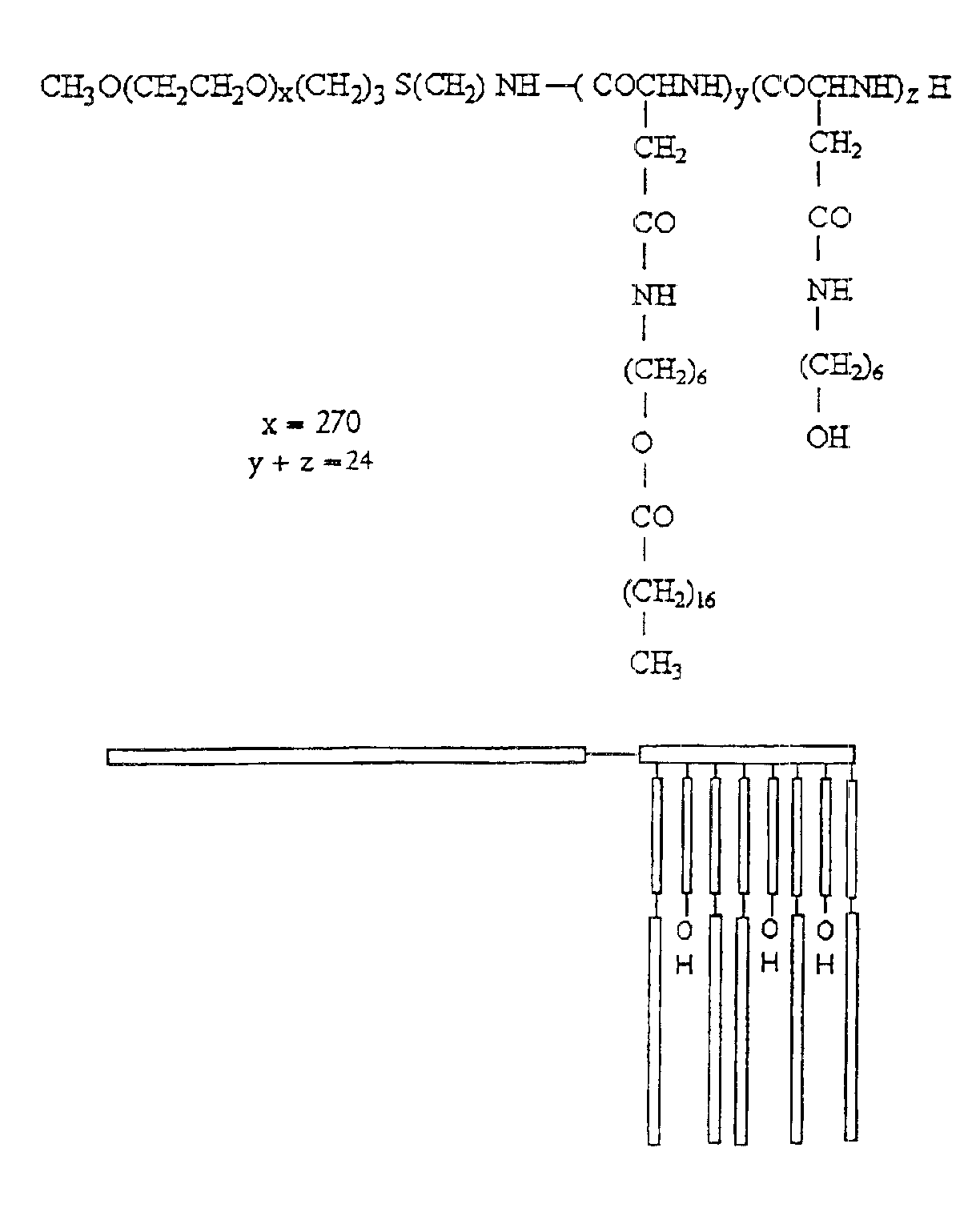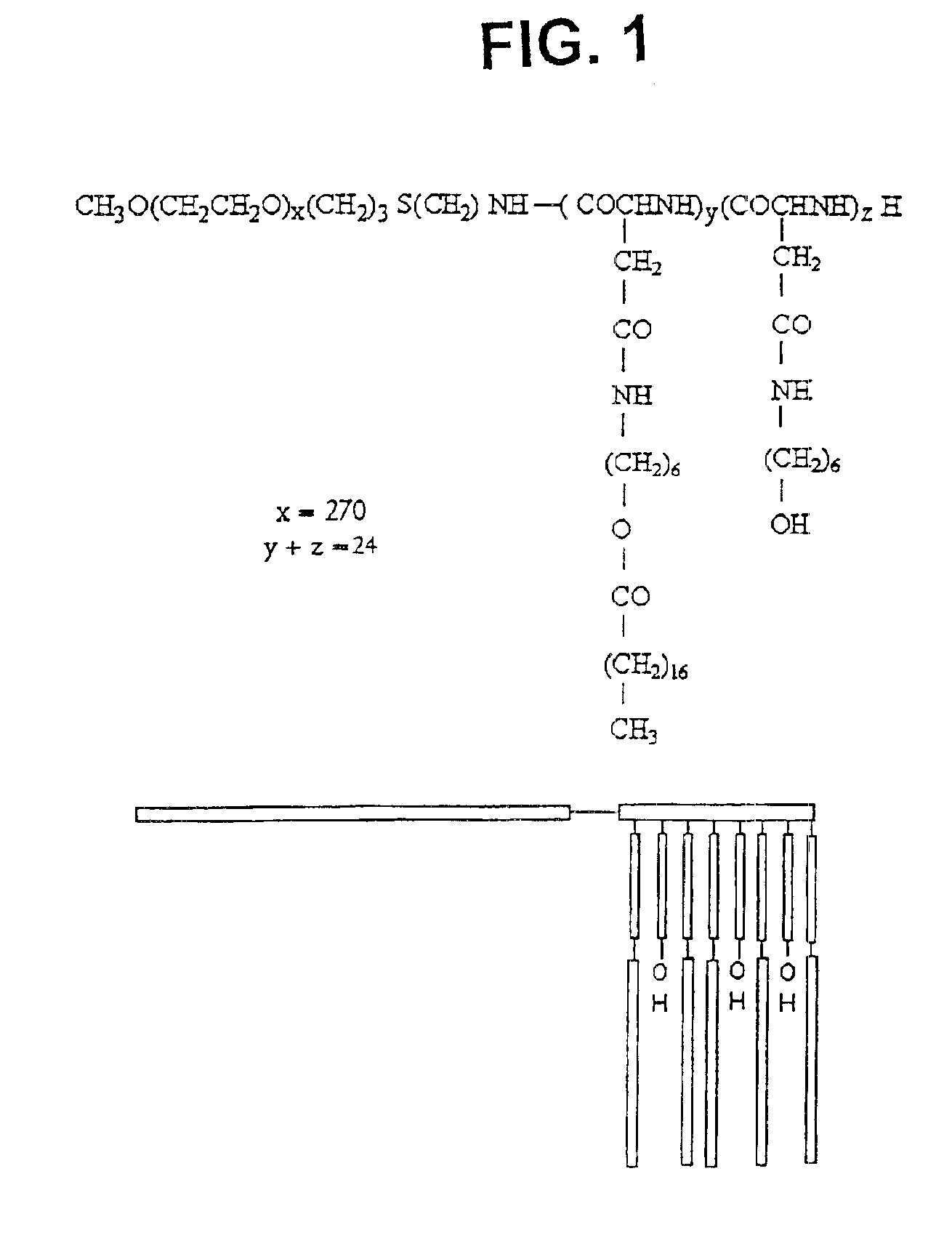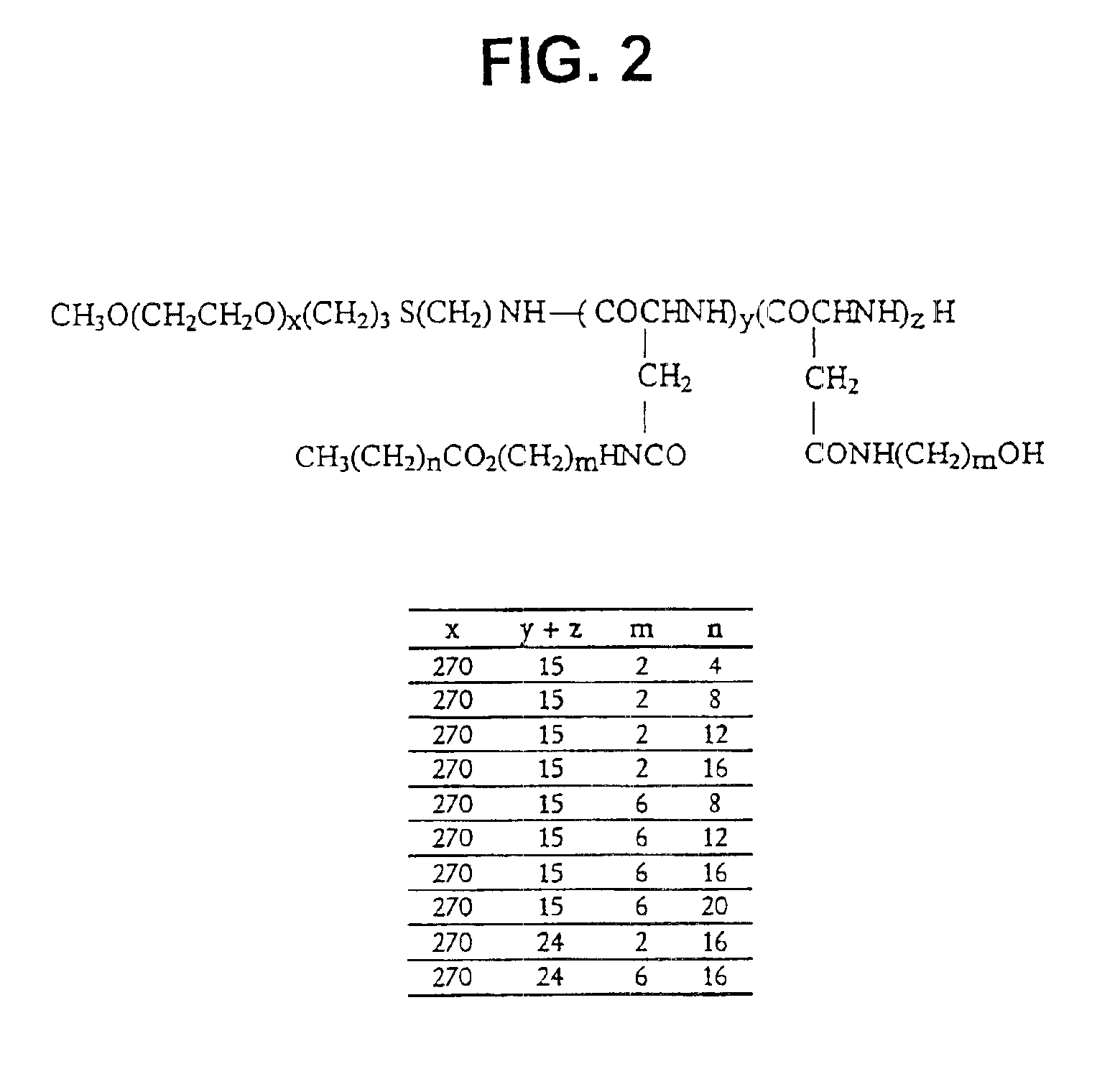Methods and compositions for polyene antibiotics with reduced toxicity
a polyene antibiotic and composition technology, applied in the direction of capsule delivery, microcapsules, heavy metal active ingredients, etc., can solve the problems of serious systemic mycosis, life-threatening, and add to treatment costs, so as to improve interactions and improve results
- Summary
- Abstract
- Description
- Claims
- Application Information
AI Technical Summary
Benefits of technology
Problems solved by technology
Method used
Image
Examples
example 1
Synthesis of Fatty Acid Esters of PEO-block-poly(hydroxy-alkyl L-aspartamide)
[0066]The synthesis of PEO-b-PBLA block copolymers is described in detail elsewhere (Yokoyama et al. (1992) Bioconj. Chem. 3, 295). PEO-b-PBLA block copolymers were synthesized by ring-opening polymerization of b-benzyl L-aspartate N-carboxyanhydride using α-methoxy-ω-amino-PEO as an initiator (Mn=12,000 gmole−1, Mw / Mn=1.05, amine functionality=0.96). Based on 1H NMR spectroscopy, the degree of polymerization of the PBLA block in the samples was either 15 or 24. To differentiate between these samples, a nomenclature of 12-15 or 12-24 is defined in this paper based on molecular weight of the PEO block (12000 gmole−1) and the degree of polymerization of the PLAA block (15 or 24).
[0067]PEO-b-PBLA (0.10 mmol BLA units) was dissolved in dried N,N-dimethylformamide (DMF) (5 mL) with the aid of stirring and slight heating. Subsequently, 2-aminoethanol or 6-aminohexanol (10 eq) and 2-HP (0.3 mmol) were added. The r...
example 2
Micelle Formation From Fatty Acid Esters of PEO-b-PHAA
[0070]In experiments carried out to compare fatty acid aliphatic chain length, the dialysis method was used to prepare micelles. Micellization of polymers was achieved by dissolving 15 mg of each polymer in 4.0 ml of DMF with the aid of slight heat. Doubly distilled water was then added to this solution in a drop-wise manner (one drop per 20 s) until the final water concentration was 10-15% (v / v). A dialysis membrane with a molecular cutoff of 12,000-14,000 gmole−1 was used to replace the organic solvent with distilled water overnight at room temperature replacing the medium three times. Micelles were then passed through 0.22 μM filters.
[0071]In certain other experiments, the dialysis method as described in Lavasanifar et al. (2000) supra was used. AmB (400 mg) and PEO-b-PHSA (20 mg) were both dissolved in 1.2 ml of N,N-dimethylsulfoxide. Distilled water was added to the solution in a drop-wise manner (1 drop / 20 sec) until the wa...
example 3
Transmission Electron Microscopy (TEM)
[0075]Samples for TEM were prepared by placing 20 μl of polymeric micellar solution (1.0-1.5 mg / ml) on a copper-coated grid. A portion (20 μl) of 2% phosphotungstic acid in water was added as the negative stain. After 1 min excess fluid was removed using filter paper, and images were obtained at a magnification of 18,000 times (75 kV) (Hitachi H 7000). Apparent micellar diameters were measured, and a mean diameter +SD was calculated based on at least 120 measurements.
PUM
| Property | Measurement | Unit |
|---|---|---|
| Temperature | aaaaa | aaaaa |
| Temperature | aaaaa | aaaaa |
| Temperature | aaaaa | aaaaa |
Abstract
Description
Claims
Application Information
 Login to View More
Login to View More - R&D
- Intellectual Property
- Life Sciences
- Materials
- Tech Scout
- Unparalleled Data Quality
- Higher Quality Content
- 60% Fewer Hallucinations
Browse by: Latest US Patents, China's latest patents, Technical Efficacy Thesaurus, Application Domain, Technology Topic, Popular Technical Reports.
© 2025 PatSnap. All rights reserved.Legal|Privacy policy|Modern Slavery Act Transparency Statement|Sitemap|About US| Contact US: help@patsnap.com



